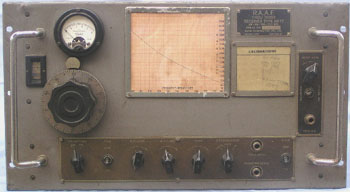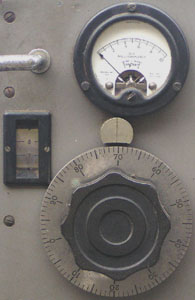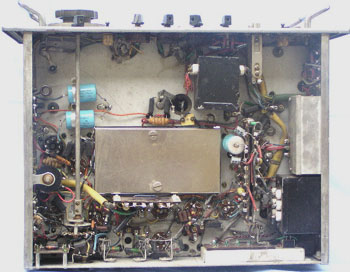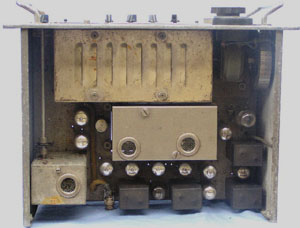General Description
The receiver uses a double superhetrodyne circuit employing I8 valves and is designed for communication purposes or for obtaining direction finding bearings on aircraft.
It operates on both AM and FM and has facilities for CW and MCW, within the frequency range 100 - 150 M/cs. The receiver is designed for 19" rack mounting. The power supply for the receiver is "Type N", which provides operation from 110-220-240 volts AC or 6 volts DC.
Technical Data
954 RF amp; 1st Mixer; 9551st local osc; VR150/30 Voltage regulator; 7W7 12m/cs if amp; 7A8 2nd converter; 7W7 x2 4.3m/cs if amps; 7C7 bfo; 7C5 output; 7A6 am detector and avc; 7C7 2nd limiter; 7C7 audio amp; 7C7 2nd limiter; 7W7 tuning meter indicator; 7A6 discriminator; 7A6 squelch; 7F7 squelch controlled af amp.
Electrical Performance Characteristics:
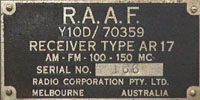
Frequency Coverage: 97 - 153 mc/s appx.
Sensitivity:
AM: 1.5 microvolts
30% mod at 1000 cps gives 6mw into 600 ohms.
FM: 1 microvolt
causes effective limiting.
Selectivity:
+6db = 84kcs
+60db = 400kcs
Power Outputs:
600
ohms (tels L.R.) 25 mw
10000 ohms (tels
H.R) 90 mw
1750
ohms (speaker) 500 mw
Frequency Response: 800 - 3000 cps 4db
Automatic Volume Control: 50 - 100 000 microvolts within 6db
Image Ratio: gtr 60db
Distortion: less 10% at 6 mw into 600 ohms.
The unit was sometimes supplied as "Rack Assembly Type 12S". As such it comprised an AR17, Power Supply Type N, Crystal Calibrating Unit Type A2 and Remote Control Unit Type A1l. The Rack was Type A4 (2 units - Upper and Lower)
These receivers have never ever been particularly numerous on the disposals scene. They must have been the most complicated locally built receivers of the war. They appear to be the only locally produced receiver capable of receiving FM signals during the period.
It is known that Radio Corporation (Melbourne) had commercial links with Bendix Radio (U.S.A.) during WW2 - Perhaps the design has something to do with this liaison.
A similar AM set of the day was the American BC639, which is basically a rack mounted, mains operated BC 624. (of SCR522 fame.)
